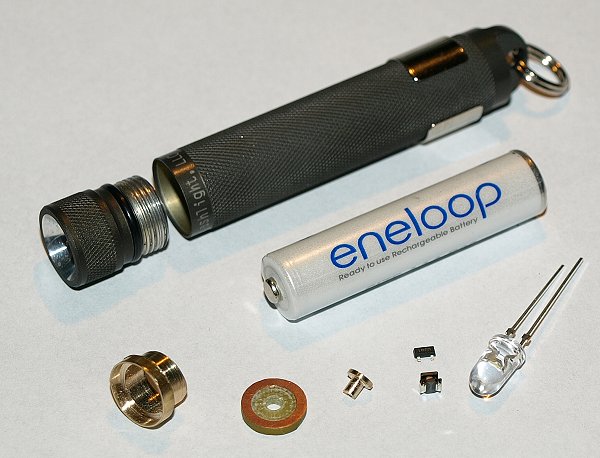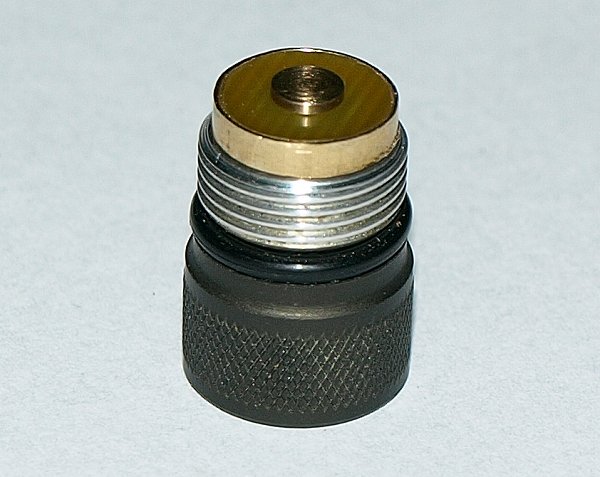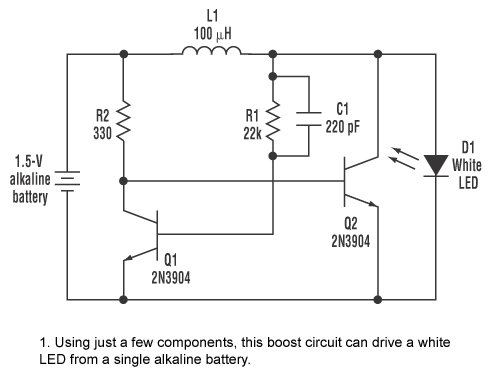Do you know
this improvement of the Joule Thief?
I tried to build the "LED torch circuit B" and connected it to a Nichia GS, powered by one NiMH.
It works fine, nevertheless I get slightly different results from what the author reports.
When adding the 10n capacitor to change circuit A into circuit B, I do notice a significant decrease of the total current* in the circuit (let's call it Ic). But unlike the author ("The brightness of the LED did not alter") I see that the LED gets definitely dimmer. Then I tried with a smaller Vf LED (a red one), and this time the LED brightness did not change when adding the 10n.
My second attempts was with two NiMH as the power supply (so Vin was about 2.7 V since my batteries were freshly charged), and one Nichia.
In this case the capacitor did not affect the LED brightness (which is much brighter in this case than with 1 NiMH).
Then I put two Nichias in series: again the LEDs brightness decreased significantly with the capacitor.
So I came to the conclusion that the capacitor improvement does not affect the LED brightness only if Vin is not to low compared to the LEDs total Vf.
In fact my goal is to drive two Nichias with two NiMH (a bike light modification), so I tried it. First attempt with the original 2k7 resistor: the LEDs were much dimmer with the capacitor than without, not a good result.
So I tried to change the resistor value:
- R=2k --> the LEDs are still dimmed by adding the capacitor,
- R=1k5 --> no difference in LEDs brightness, with or without the capacitor. And Ic with the capacitor is about 1/3 Ic without the capacitor*.
- R=1k --> the LEDs are brighter with the capacitor (nice) but Ic is reduced only by 40%.
*important note: the currents were measured with a DMM, which I know is not good to measure such (pulsed) currents. But hopefully the current comparisons are somewhat realistic? This should be tested with an oscilloscope.
Re. the transformer: I was surprised to see that some of the designs mentioned above in this thread use very few turns around the ferrite core, and the same number of turns for the primary and secondary windings. The circuits I tried use a transformer with 60/40 turns. Is the number of turns of little importance?
For now I'll stick to circuit B with R=1k5, but I'm not very satisfied with the brightness of the LEDs once the batteries voltage is down to 1.2 V so any suggestion for a more efficient design to drive two Nichias with two NiMH would be welcome. I'd like the LEDs to be as bright as in the Fenix E01 (where they are driven @ 25 mA DC).




